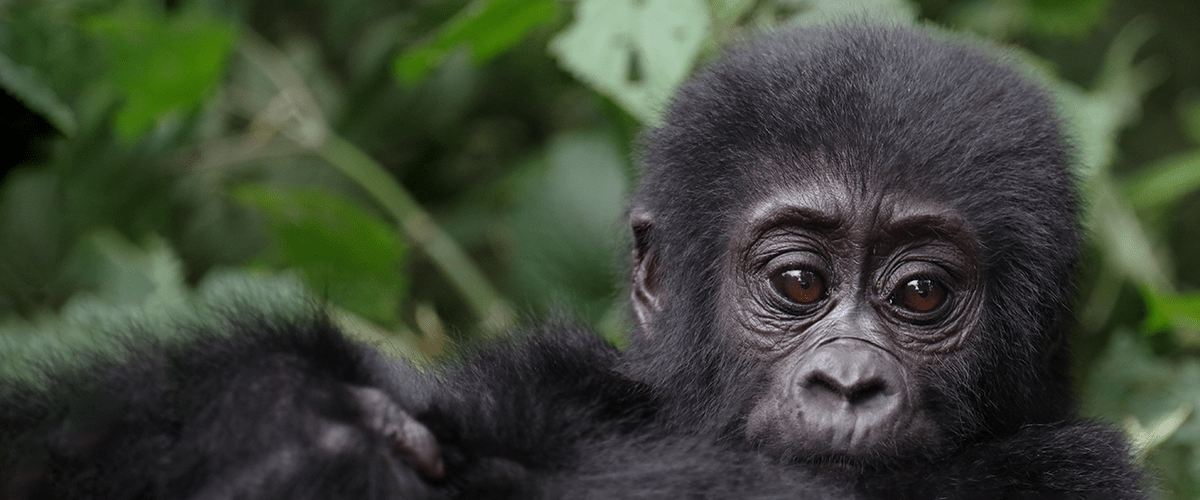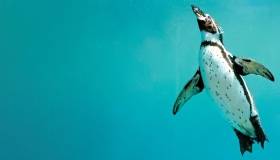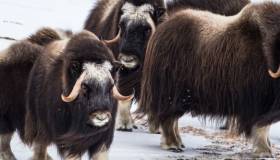
Updated May 19, 2022– Climate change. Habitat destruction. Pollution. Poaching. The planet’s wildlife species are coming under ever-increasing threats due to many factors. But often overlooked are threats to wildlife from diseases both old and new.
Disease threats can include known illnesses that affect new species, such as canine distemper in Amur tigers. Or they could represent new diseases that spread quickly through a vulnerable population, such as the emergence of a transmissible cancer called devil facial tumor disease in Tasmanian devils. Loss through disease can decimate a population in a short amount of time and, if a species is already threatened, loss to disease can compound an already desperate situation.
Morris Animal Foundation has long recognized the danger posed by disease on wildlife. Our efforts to save Ugandan mountain gorillas, New Zealand’s yellow-eyed penguins and Australia’s koalas are just a few examples that showcase our commitment to saving wild animals from health threats around the world.
Mountain Gorillas
There’s nothing more enchanting than the face of a baby mountain gorilla. But in the 1980s, this iconic species was almost lost forever. Thanks to a partnership forged before Dian Fossey’s death, Morris Animal Foundation pledged to help save the mountain gorillas and ever since the species has slowly come back from the brink of extinction.
Beginning in 1986, funding from Morris Animal Foundation helped establish the Volcanoes Veterinary Clinic, the Kinigi Veterinary Laboratory and the development of an animal health management plan for Volcanoes National Park in Rwanda – now independently operated through the Mountain Gorilla Veterinary Project (MGVP). By establishing infrastructure in Rwanda, the Foundation and the MGVP paved the way for veterinarians and animal health researchers to treat and study mountain gorillas in their natural habitat.
Today, Morris Animal Foundation continues to support mountain gorilla health research aimed at improving the care and conservation of these amazing animals. One ongoing project is working to pinpoint the cause of a chronic wasting syndrome in gorillas, after observing considerable numbers of mountain gorillas suffering from this syndrome in Bwindi Impenetrable Forest National Park, Uganda. The team is studying a potential connection between the syndrome and parasitic worm infections. They hope their findings will help inform treatment and management decisions to ensure these animals thrive and survive.
Yellow-Eyed Penguins
Considered one of the rarest penguins in the world, the yellow-eyed penguin – known locally as the hoiho – lives along the forest coastlines in New Zealand. This endangered penguin faces a myriad of threats, both marine and terrestrial. Poor breeding success in some colonies has put this species at further risk of extinction. By some estimates, if action isn’t taken now, the yellow-eyed penguins may be extinct on mainland Aotearoa New Zealand in the next few decades, with disease believed to be a significant, growing contributor.
Foundation-funded researchers are hard at work identifying the causative agents of two diseases causing high mortality in yellow-eyed penguin chicks. One disease causes sores in the mouths of chicks, resulting in a high rate of mortality. In 2020, more than half the population of penguin chicks were affected and about a third of these chicks perished. More recently, researchers observed another disease that causes lung congestion in very young chicks, resulting in additional loss of life. Identifying the cause of these diseases will help conservation managers develop strategies to save the chicks and the species as a whole. Their findings could also help other at-risk penguin species where these diseases pose a growing threat.
Koalas
Once found in abundance, Australia’s government recently reclassified the conservation status of the koala from vulnerable to endangered. Widespread bushfires, drought and land clearing has destroyed much of the eucalyptus-rich habitat koalas rely on for their survival.
Another loaming threat the koala population faces is an uptick in disease.
In recent years, Foundation-funded researchers have identified and studied a retrovirus linked to cancer in koalas, most notably lymphoma. Koala retrovirus (KoRV) belongs to a group of viruses that are efficient at suppressing the immune system. One of the more well-known retroviruses in recent history is human immunodeficiency virus (HIV). Like people with HIV, koalas infected with KoRV are more susceptible to infections and disease.
In another ongoing study, researchers are studying chlamydial disease, a major threat to koala survival, resulting in blindness, urinary tract infections and infertility. This team is conducting a clinical trial evaluating an adjunct treatment for koalas receiving antimicrobial therapy for chlamydia. They hope their findings will allow more koalas to be successfully treated for chlamydia and returned to the wild.
HOW YOU CAN HELP
Morris Animal Foundation has a long history of stepping in when disease threatens the animals we love, whether it’s the dog on your couch or a small penguin living on the remote coasts of New Zealand. Endangered species represent especially dire populations needing our help. Learn more about our work with wildlife and what you can do to help save vulnerable species and advance the health and well-being of animals everywhere.


